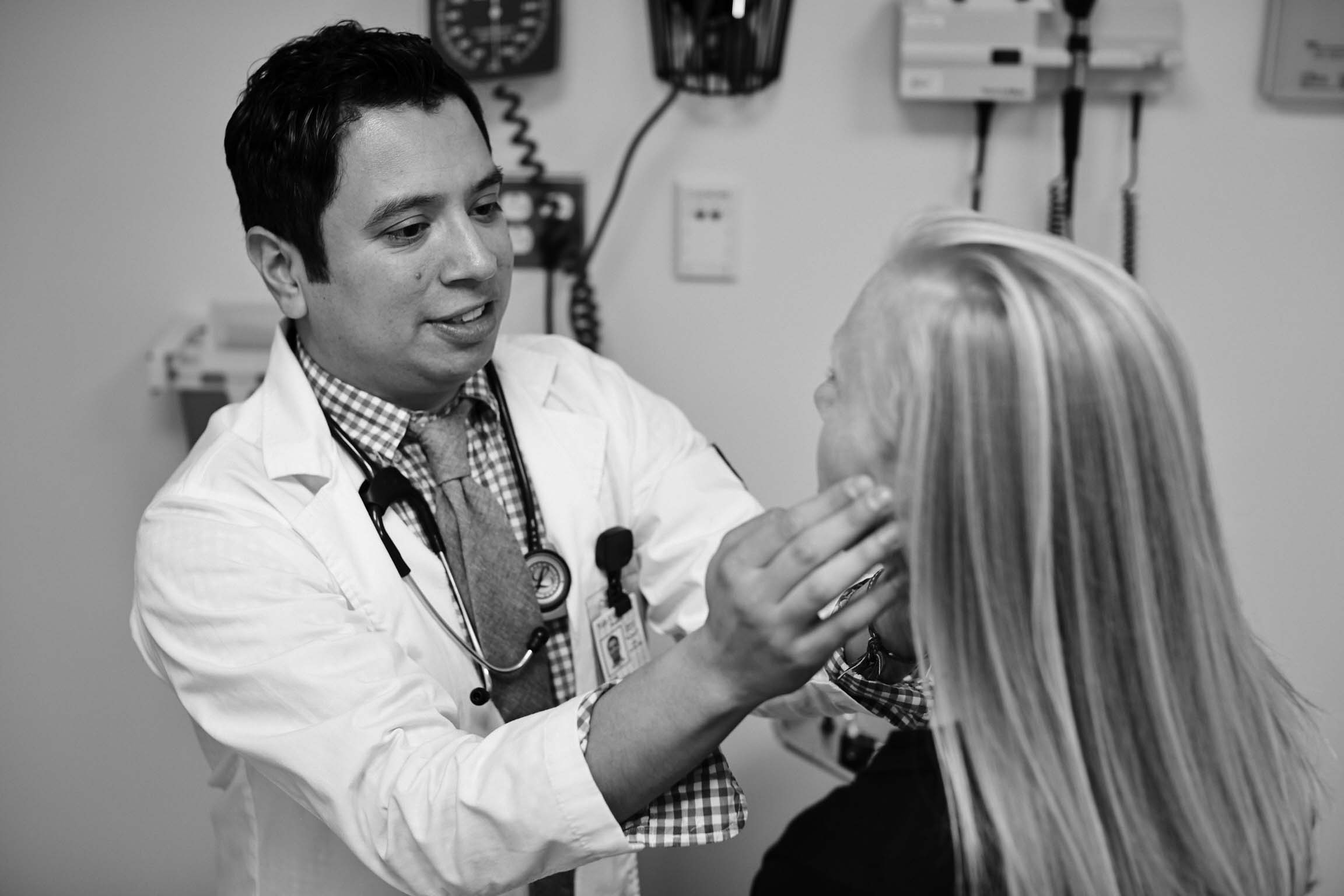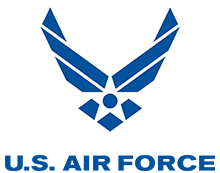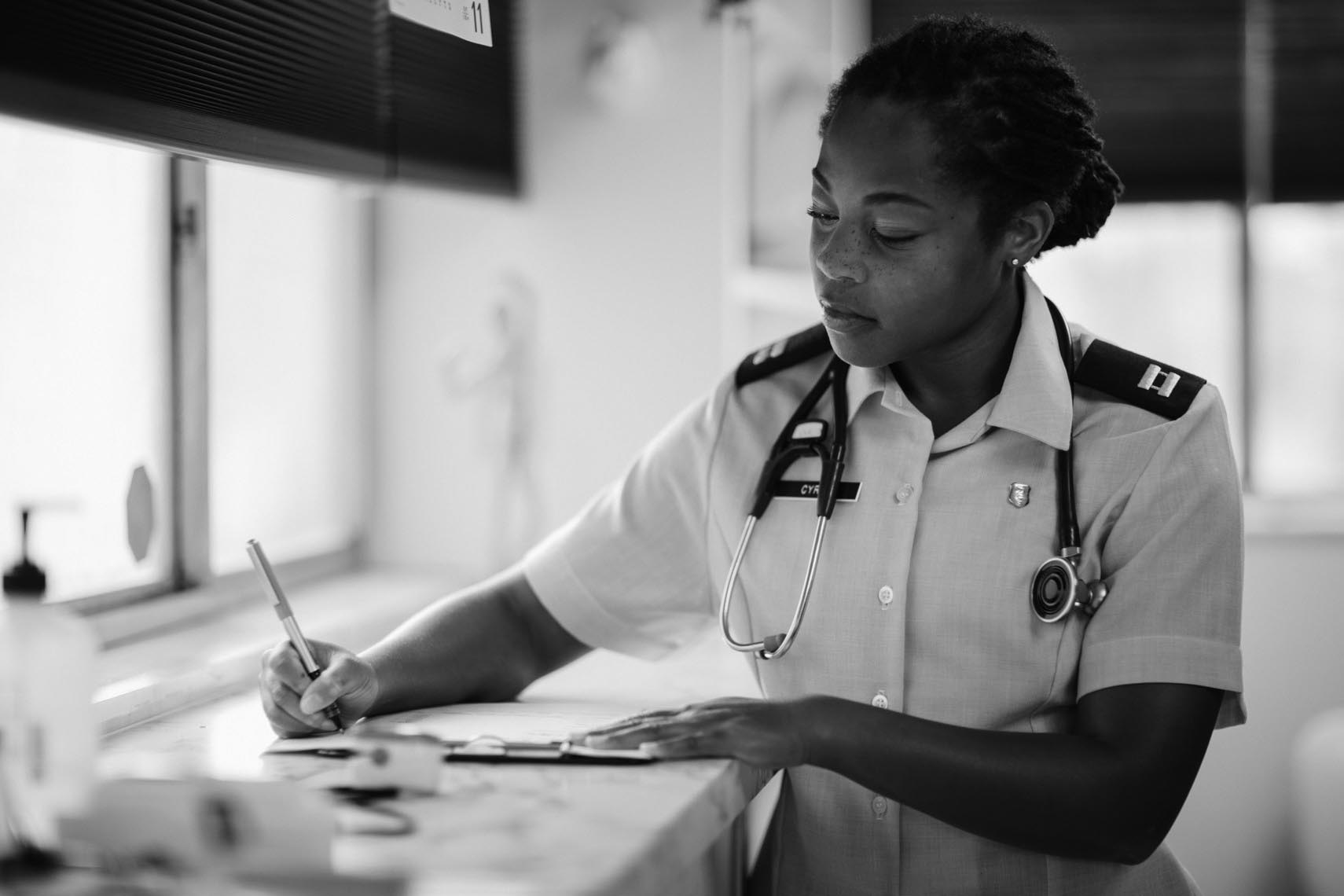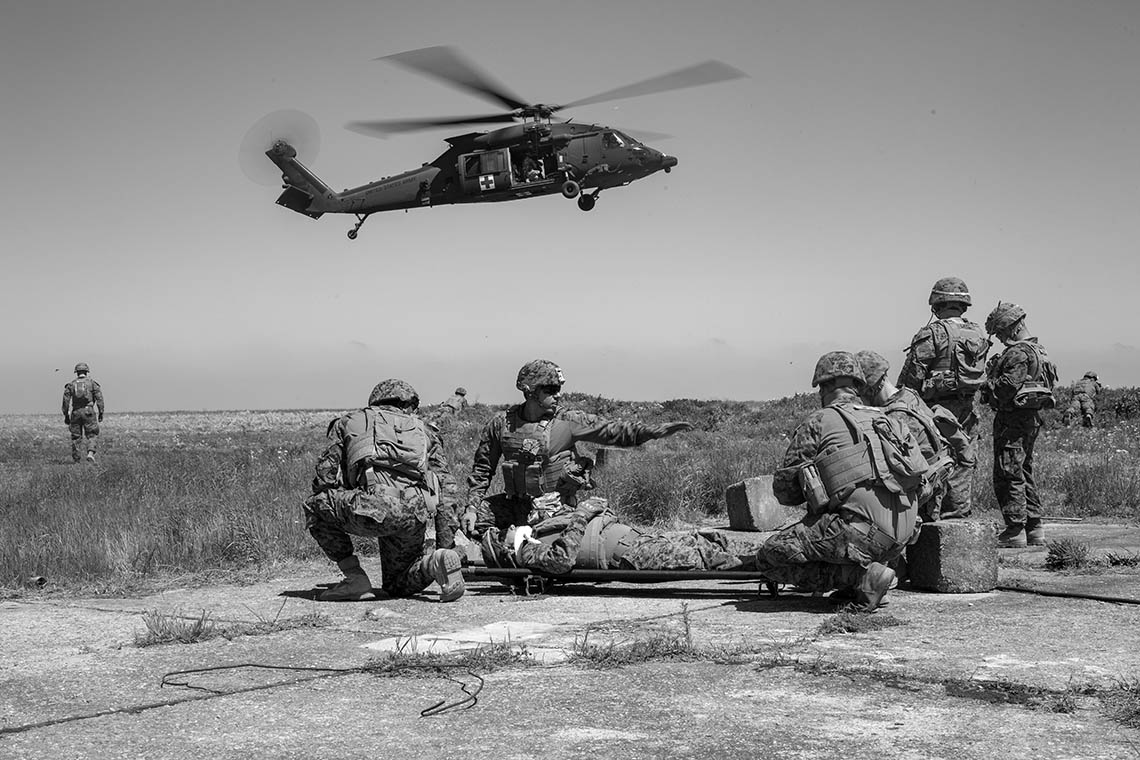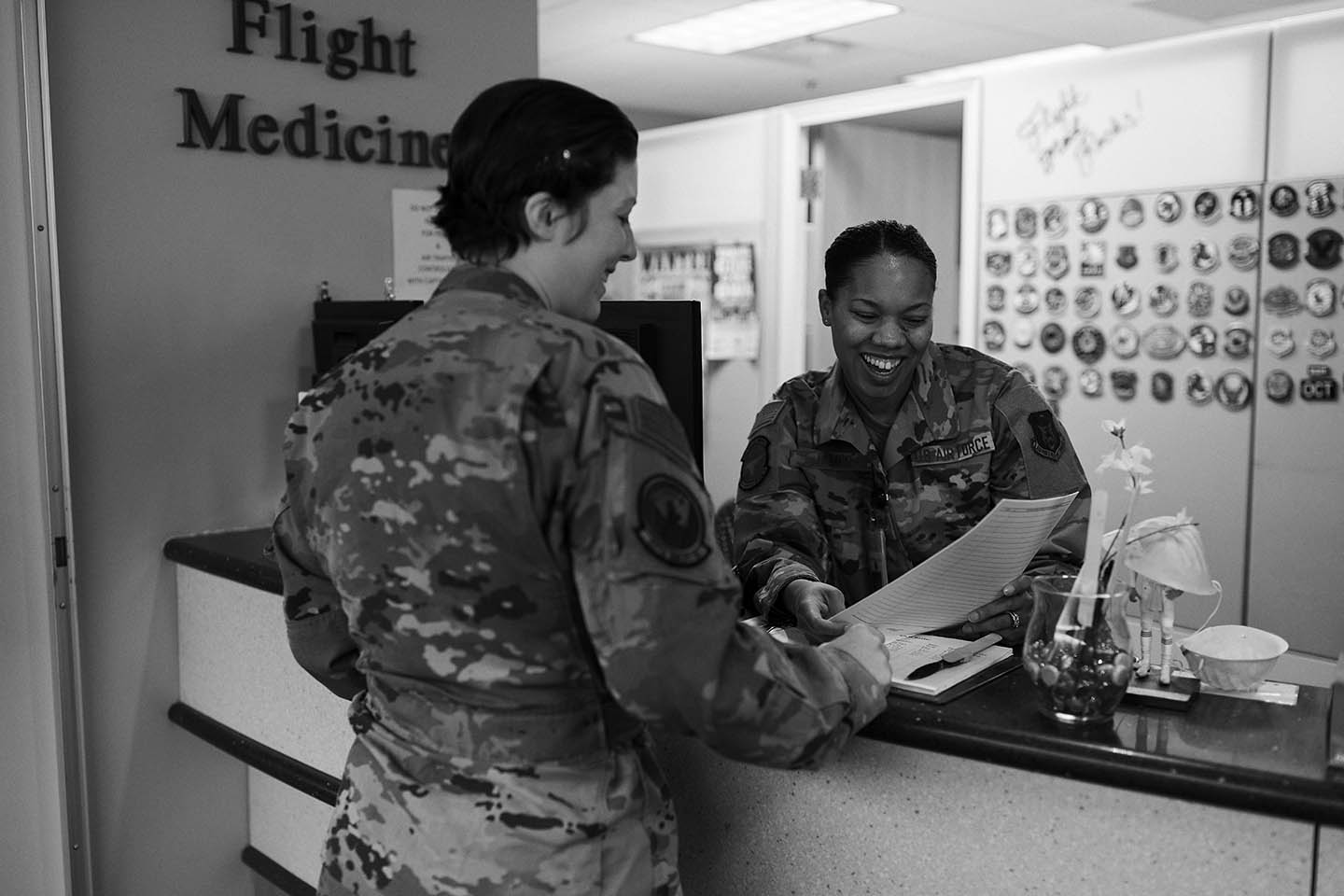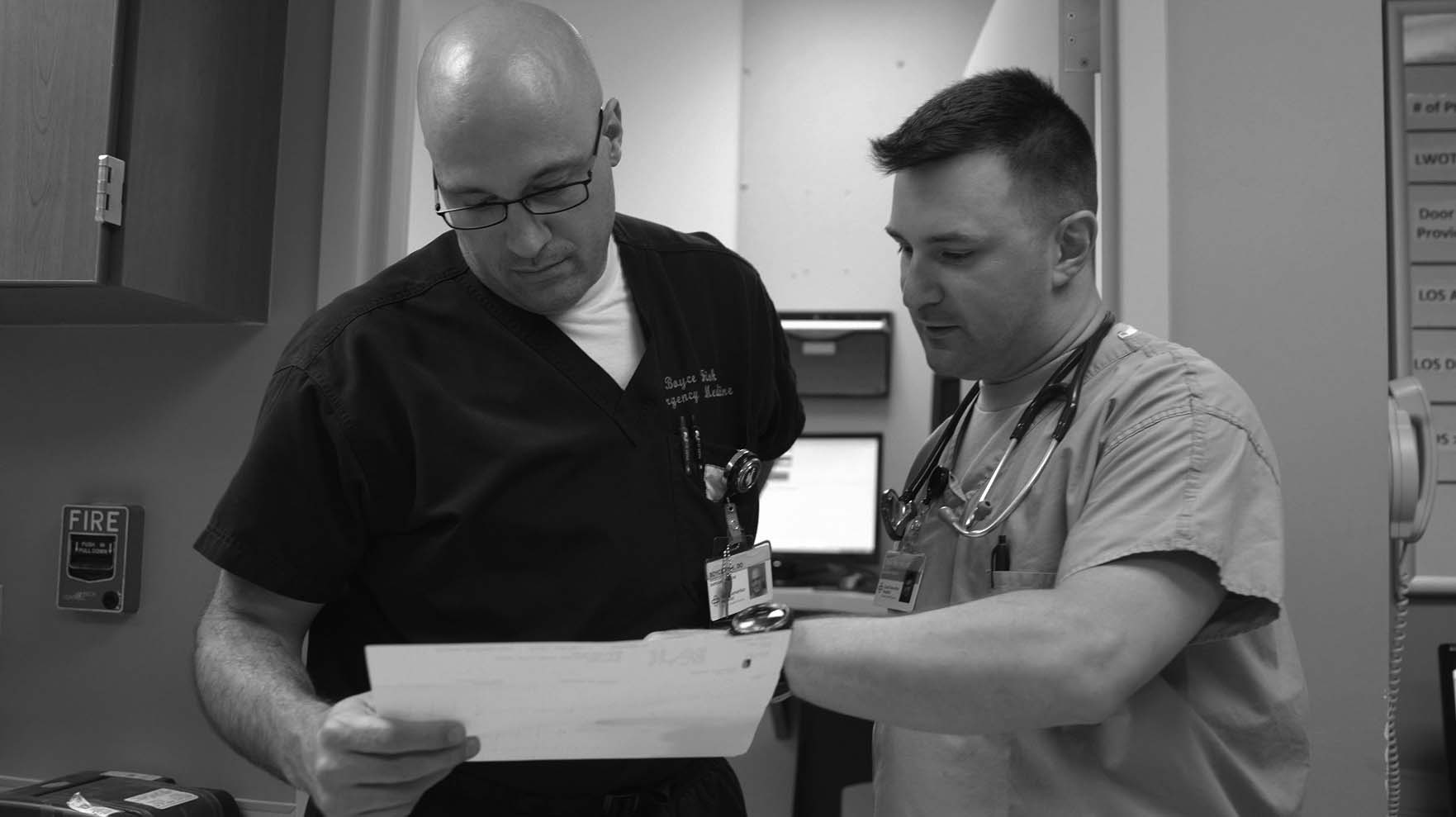- FAQs
- |
Day in the Life
Follow five military physicians as they navigate the challenges and rewards during one day of service.
5 PHYSICIANS. 24 HOURS.
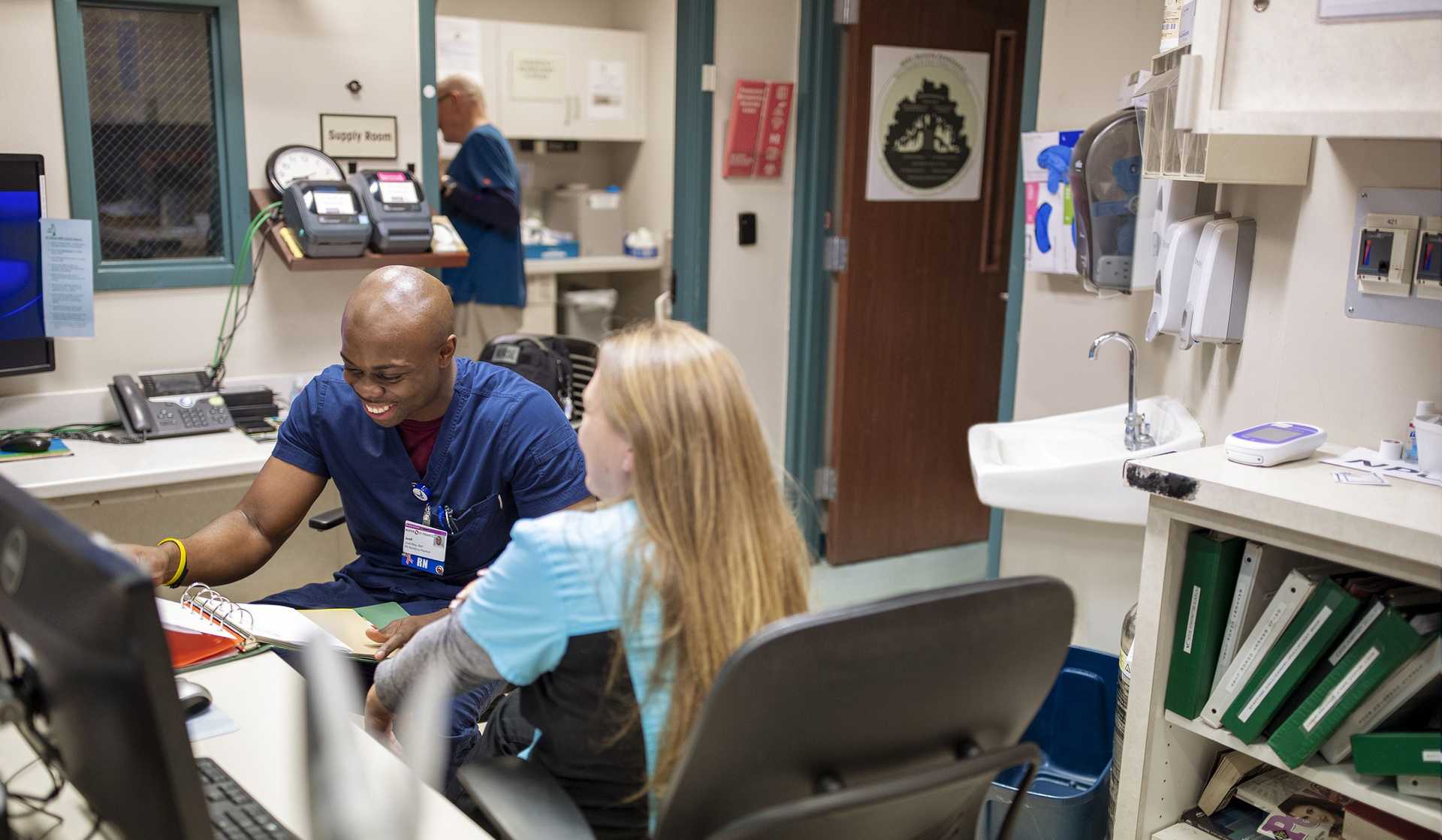

04:00PM
Annual Weapons Qualification
Sara's primary responsibility as a Guard physician is to be a solider, and to know how to defend herself, her patients and her peers. She's required to participate in an annual weapons qualification to ensure she's proficient in her assigned duty weapon.

Sara Burdash, M.D.
Field Surgeon, Army National Guard
Annual Weapons Qualification
Sara's primary responsibility as a Guard physician is to be a solider, and to know how to defend herself, her patients and her peers. She's required to participate in an annual weapons qualification to ensure she's proficient in her assigned duty weapon.
BURDASH: Right now, we’re at our nine millimeter weapons range. So we’re getting ready, we’re getting all set up for the day. All the safety staff are getting here, and we’re starting to get all the ammo ready, and what we’ll be doing is firing at these, actually. They’ve changed the regulations, so now the way we fire, not only we’ll be standing and firing at the targets, but we also get to walk towards them and fire that way. So, that’ll be a new adventure. Like you see, you can see all the range; these will actually pop up and pop down. And then we’ll have multiple firers going at once. So I’ll be one of those firers. We’ll actually be changing magazines while we walk forward towards the firing line, from the back. So it’ll be a little bit more dynamic, a little bit more realistic.
This is part of our annual qualifications. We have to make sure that we are proficient in whatever our assigned duty weapon is. Last time I shot, I shot expert. So, that’s my goal. And if not, at least we’ll have a good time, and try to hit as many targets as we can.
MALE: Firers, at this time, go ahead and move out. Cease fire there, cease fire. Clear off make sure that it’s clear.
BURDASH: So, not quite as good as I did last year, but still not too bad. You know, sharpshooter is OK. I would have preferred expert like last year, but considering it was the first time doing walking, not too bad. Next time I’ll practice up and try to beat these guys.

04:00PM
Dermatology Skin Exam
Josephine is the Navy's only dermatologist serving the entire Pacific Northwest. Her patients are active-duty service members, dependents and retirees of all ages with a variety of skin conditions. Today, she uses a laser hair removal treatment on a petty officer suffering from pseudofolliculitis barbae.

Josephine Nguyen, M.D.
Dermatologist, Navy
Dermatology Skin Exam
Josephine is the Navy's only dermatologist serving the entire Pacific Northwest. Her patients are active-duty service members, dependents and retirees of all ages with a variety of skin conditions. Today, she uses a laser hair removal treatment on a petty officer suffering from pseudofolliculitis barbae.
NGUYEN: The best of my job is, people come in with a wide range of knowledge about their skin. Some people know all about gentle skin care; other people are like, “I don't even know what moisturizer to use.” So it’s exciting for me to be able to see where patients are at, and then imparting them a certain amount of knowledge and then having them come back and continue to layer knowledge. Hi, good morning, how are you?
PATIENT: Good morning, how are you?
NGUYEN: Good to see you again.
PATIENT: Good to see you as well.
NGUYEN: Petty officer is here to treat PFB, or pseudofolliculitis. Because of the thickness and curliness of the hair, when the hair gets cut, it curls back into the skin and causes a keloidal papule, or a scar. So this is extremely tender, painful and itchy and cosmetically disfiguring. So we’ve found that use of the laser hair removal to target the hair follicles to actually decrease the thickness in the caliber of the hair. How did you feel the last treatment went? No side effects?
PATIENT: No, ma’am.
NGUYEN: OK, so maybe we can be more aggressive then. So the hair bulb, which is below the skin surface, is the target, and that’s where the origin of the hair is from. And — so you’re not destroying the hair itself — you’re trying to target the origin of the hair, which is the bulb or the bulge. I currently serve as the sole Navy dermatologist for the Pacific Northwest. Because of the Military, I had the best dermatology education in the country, and I want to ensure that I take great care of my patients. So I teach them how to take care of themselves, and then they come back to me to fine-tune their regimen.

04:00PM
Regenerative Medicine At The Navy Medical Research Center
After spending the morning at Walter Reed and seeing patients at the National Institutes of Health (NIH), Jonathan travels to the Navy Medical Research Center (NMRC). He is head of the regenerative medicine department and leads a team of investigators who work to develop treatments to stop the spread of tumor growth in amputees suffering from blast injuries.

Jonathan Forsberg, M.D., Ph.D.
Orthopaedic Oncologist, Navy
Regenerative Medicine At The Navy Medical Research Center
After spending the morning at Walter Reed and seeing patients at the National Institutes of Health (NIH), Jonathan travels to the Navy Medical Research Center (NMRC). He is head of the regenerative medicine department and leads a team of investigators who work to develop treatments to stop the spread of tumor growth in amputees suffering from blast injuries.
FORSBERG: After finishing up at Walter Reed and attending morning rounds, I go to the Naval Medical Research Center to touch base with the basic science team. And they’re engaged in pre-clinical research, benchtop research, if you will. So I’ll meet with them and go over the projects and make sure everything’s on track.
I serve as department head for the Naval Medical Research Center’s regenerative medicine department. So we focus on complications like heterotopic ossification, which is the formation of bone in soft tissues. We focus on wound healing, and we also focus on improving the lives of patients with amputations.
So let’s go take a look at the lab. One of the experiments that’s ongoing right now is to determine whether a nerve injury commonly seen after a blast requires surgical treatment. If the nerve doesn’t recover, it requires surgery to be replaced. If the nerve is going to recover or has the capacity to recover, it’s better off if it were to recover on its own, without surgery.
So the purpose of this experiment is to differentiate between nerves that have the capacity to heal from nerves that don’t. The ultimate goal would be to use this technology to help guide surgical decision-making in the early phases of wound debridements.
One of the biggest benefits of being in the Military is being put into a leadership position relatively early in your career. I’ve had the opportunity to do that, both on the clinical side and on the research side. And this is not something that would happen in the civilian setting until much later in one’s career.

04:10PM
"This is some of my tactical gear. It's military property that's issued to me from the CIF (Central Issue Facility). It's like checking out a library book that you wear. The vest has pockets inside the front and back for hard plates to make it even more bulletproof."

Sara Burdash, M.D.
Field Surgeon, Army National Guard
"This is some of my tactical gear. It's military property that's issued to me from the CIF (Central Issue Facility). It's like checking out a library book that you wear. The vest has pockets inside the front and back for hard plates to make it even more bulletproof."

04:17PM
High Angle Ropes Rescue Training
Hunter trains soldiers on how to perform a high-angle rope rescue. It's not a clinical medicine skill, but it's an operational skill that Hunter teaches his medics if they need to move a patient up difficult terrain.

Hunter Winegarner, M.D.
Special Forces Battalion Surgeon, Army
High Angle Ropes Rescue Training
Hunter trains soldiers on how to perform a high-angle rope rescue. It's not a clinical medicine skill, but it's an operational skill that Hunter teaches his medics if they need to move a patient up difficult terrain.
WINEGARNER: So thanks for coming out. We're going to do a little bit more advanced rescue training today, so this is something that you might need to use in the field if you're ever moving a patient over long distances or over difficult terrain. What this is called, it is called a three to one pulley system, to help you get a mechanical advantage to move somebody heavy, like our patient here today, up over difficult terrain.
Bit of a hike.
So we're going to run our anchor all the way around this, and then we're going to — it'll be in a straight line all the way down to our patient, so this is like the perfect spot, OK?
MALE: Pull. Pull. Pull. Pull.
WINEGARNER: So Roger, you safe there?
ROGER: Yeah.
WINEGARNER: You can probably unstrap. You guys want to come over here and see what — see what I'm seeing?
I was a little surprised we were having to work as hard as we were to get both Roger and the patient up, so we gotta make sure that the rope goes through the pulley, right? It's the first time, it's no big deal. You've never done anything like this, so next time you won't do that, right?
MALE 1: No, sir.
WINEGARNER: Good job, guys. That's your intro to high-angle rescue.

04:18PM
"Here are the range safety personnel receiving a briefing about the weapons qualification so that they can keep everything running smoothly and safely."

Sara Burdash, M.D.
Field Surgeon, Army National Guard
"Here are the range safety personnel receiving a briefing about the weapons qualification so that they can keep everything running smoothly and safely."

04:21PM
"Each month, we invite a speaker to our leadership development initiative lecture series. This afternoon, I'm meeting with HM1 Aragon, who spent time overseas as the sole corpsman to a Marine Corps battalion. I want him to talk about the reality of his experience in the battlefield and how it shaped his own views on life."

Josephine Nguyen, M.D.
Dermatologist, Navy
"Each month, we invite a speaker to our leadership development initiative lecture series. This afternoon, I'm meeting with HM1 Aragon, who spent time overseas as the sole corpsman to a Marine Corps battalion. I want him to talk about the reality of his experience in the battlefield and how it shaped his own views on life."

04:33PM
"Here is the pulley and ropes we use to make the three-to-one pulley system, which helps give us a mechanical advantage to move somebody heavy up over difficult terrain. The pulleys themselves are actually what's called a Prusik Minding Pulley."

Hunter Winegarner, M.D.
Special Forces Battalion Surgeon, Army
"Here is the pulley and ropes we use to make the three-to-one pulley system, which helps give us a mechanical advantage to move somebody heavy up over difficult terrain. The pulleys themselves are actually what's called a Prusik Minding Pulley."

04:47PM
"This is one of the pop-up targets from our weapons qualifications range. They say that you're supposed to aim for center mass or the middle of the body. They fall backward when shot and it's also computerized, so you know if you hit it or not."

Sara Burdash, M.D.
Field Surgeon, Army National Guard
"This is one of the pop-up targets from our weapons qualifications range. They say that you're supposed to aim for center mass or the middle of the body. They fall backward when shot and it's also computerized, so you know if you hit it or not."

